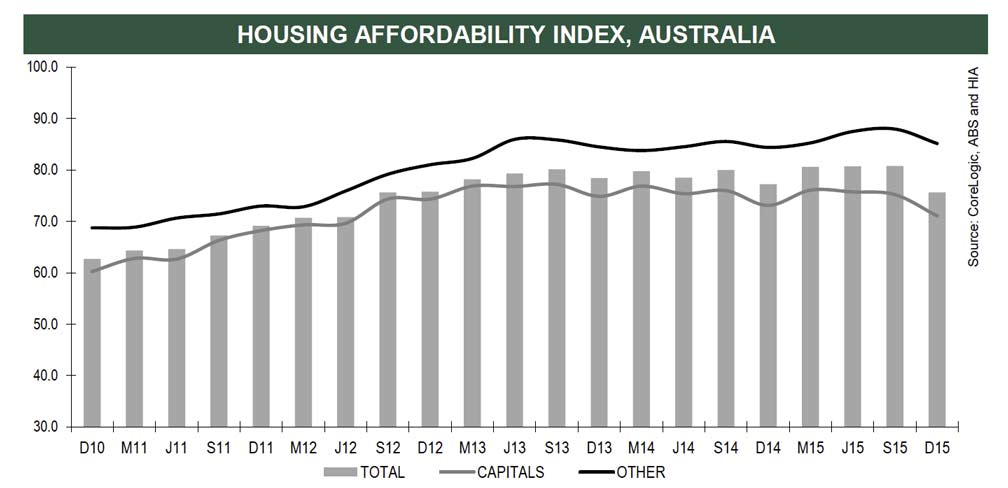November’s increase in the major banks’ variable mortgage interest rate was a setback for housing
affordability, according to the latest Affordability Report from the Housing Industry Association.
 Affordability deteriorated by some 6.4 per cent during the December 2015 quarter. Canberra saw the most unfavourable change in affordability (-11.4 per cent), with affordability worsening by 10.5 per cent in Melbourne and by 3.3 per cent in Sydney. Darwin was the only one of the eight capital cities to see improved affordability during the quarter. Just two of the seven regional markets covered by the report saw more favourable affordability during the December 2015 quarter.
Affordability deteriorated by some 6.4 per cent during the December 2015 quarter. Canberra saw the most unfavourable change in affordability (-11.4 per cent), with affordability worsening by 10.5 per cent in Melbourne and by 3.3 per cent in Sydney. Darwin was the only one of the eight capital cities to see improved affordability during the quarter. Just two of the seven regional markets covered by the report saw more favourable affordability during the December 2015 quarter.
“The unilateral increase in the major banks’ variable mortgage rates which came despite the absence of
any change in the official cash rate has delivered a significant blow to housing affordability,” noted HIA
Senior Economist, Shane Garrett.
“Combined with double-digit dwelling price growth in cities like Sydney and Melbourne, the shock jump
in interest rates has pushed home affordability to its least favourable position in over three years,”
Shane Garrett pointed out.
“The affordability challenge has been compounded by the slow pace of earnings growth which means
that the buying power of households has not kept pace with dwelling prices.”
“The increase in mortgage interest rates during November was an unpleasant surprise for homeowners, and housing affordability will be damaged even further if this tactic is repeated,” warned Shane Garrett.
“Governments must play their part too. Stamp duty is a huge source of woe for those trying to come up
with the funds for a home. HIA research has shown how the typical stamp duty bill of around $20,000
eventually costs homebuyers about $50,000 over the course of the mortgage due to higher LMI
premiums and mortgage interest costs. It’s time for this inefficient tax to be addressed,” concluded
Shane Garrett.
